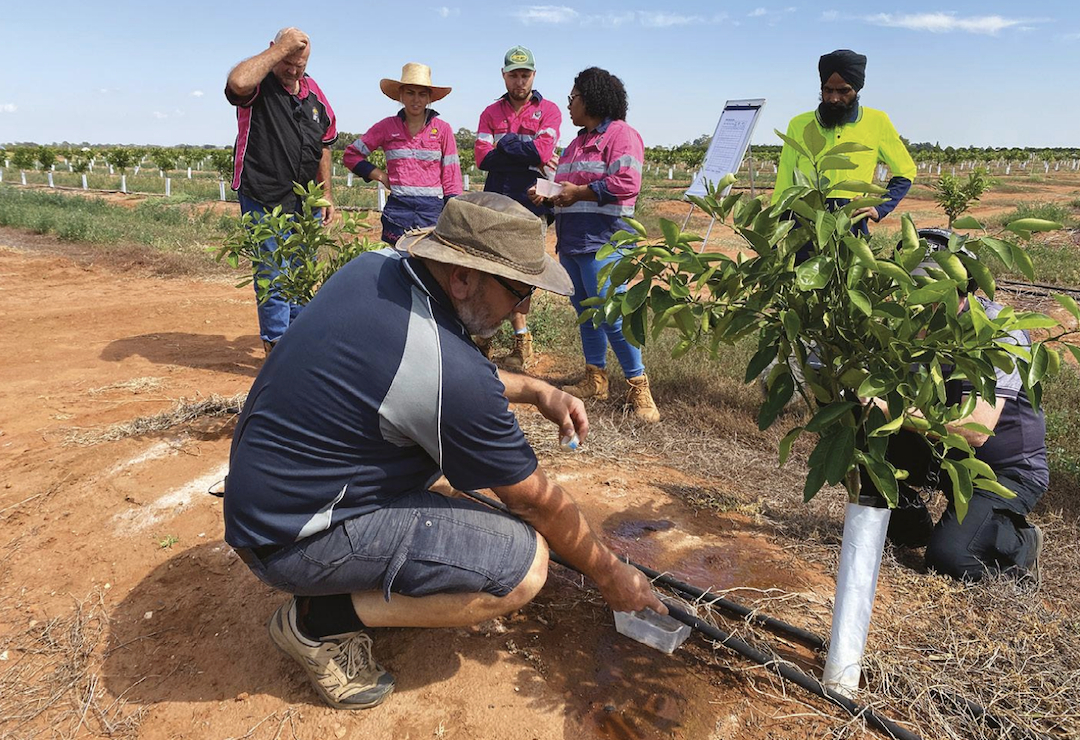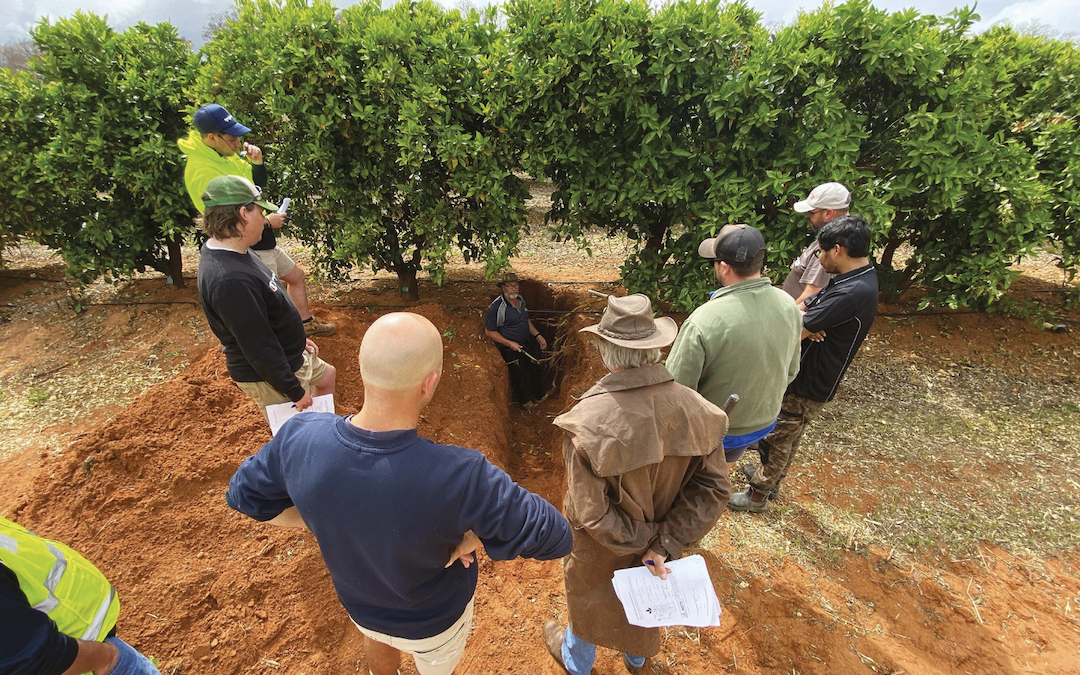From detailed images collected by satellites and information from soil moisture monitors, through to remote monitoring devices, apps and software – a wealth of data and technology is available to farmers.
But knowing how to best use it can be a challenge. Helping producers to make better use of data and technology to boost productivity in the good years and better manage during dry times is one focus of the Southern NSW Drought Resilience Adoption and Innovation Hub (Southern NSW Innovation Hub). It’s one of eight hubs established as part of the Australian Government’s Future Drought Fund initiative to create more resilient agricultural systems, landscapes and communities.
The Southern NSW Innovation Hub partners are Charles Sturt University, Australian National University, Farming Systems Groups Alliance, Local Land Services, NSW Department of Primary Industries (NSW DPI), Rural Aid and University of Canberra.
At the 600ha Superseasons citrus orchard near Hillston in the Riverina, Peter Ceccato has an ambitious goal to reduce his water use to half that needed using traditional irrigation methods without impacting yields.
Peter and his employees took part in a ‘digital irrigation masterclass’ developed by the NSW Department of Primary Industries (NSW DPI). The masterclasses were part of the national Drought Management for the Health and Longevity of Perennial Horticulture Plants project led by the South Australian Hub in collaboration with the Tasmania and Victorian Hubs and locally the Southern NSW Innovation Hub and NSW DPI and its Climate Smart Pilots project, part of the NSW Primary Industries Climate Change Research Strategy funded through the NSW Climate Change Fund.
The masterclass on-farm demonstration sites showed 0.6 to 2.2 megalitres of water could be saved by using modern irrigation practices and principles.

A citrus tree with a trunk dendrometer and SAP flow sensors gathering more plant sensing information for future workshops.
Peter said taking part had significantly improved his orchard’s drought resilience, bridging the gap between technology and on-ground practices to understand irrigation data.
“We’re now more efficient with improved timing and management skills in irrigation practices,” he said.
Peter has made several changes including adjusting sprinkler heads and driplines for improved water efficiency, pressure changes and implementing more effective monitoring of irrigation. It’s resulted in enhanced tree quality with a 20 per cent reduction in water use and Peter plans to roll these changes out across the orchard.
“We really would like to see how far we could push it and save water, which also translates into power usage reduction,” he said.
Another to benefit from taking part in the masterclass is nut producer Stahmann Webster, which has 2600 hectares of walnuts in the Riverina.
The company’s technical officer Mariano Gallardo said his team discovered a wide variability in the root area due to drainage problems, causing overirrigation in some sectors of the orchard and have now adjusted their approach to ensure they only irrigate to the root zone.
Mariano recommends the course to other growers. “If growers are more efficient with water during the drought, then this means there is more for everyone to share and benefit,” Mariano said.
The outcomes of the project are impressive. 60 growers attended workshops and 250 training days over the past two years. On-farm follow up helped 17 growers analyse 288 irrigated horticulture blocks, taking in 1440 hectares.
Technology and data is also the focus of another project that aims to help rangeland producers make decisions about groundcover management and destocking to reduce the impact of drought on farm.

On-farm engagement with the course participants reaffirmed skills learned during the masterclass.
The Southern NSW Innovation Hub is also partnering with the NSW Farmers’ Association, as part of the Managing Rangelands for Drought Resilience (MRDR) project.
NSW Farmers’ western division regional services manager Caron Chester said most pastoralists use sustainable farming practices but recognising the signs of an approaching drought and adjusting farming practices early can help reduce the impact on farmers and their land. availability of groundcover and pastures during drought is important for feed for livestock and retaining soil moisture,” she said.
The project team, including consultant Dr John Leys, is working with pastoralists Bill and Pip Ryan from ‘Curragh’ at Oxley in the western Riverina.The Ryans have a well-developed drought plan that they have used for many years.
They’ll look at how satellite-based technology, the GEOGLAMM RaPP Map tool and Meat & Livestock Australia’s Australian Feedbase Monitor can complement their drought plan to predict ground cover changes and give producers an early-warning, up to six months in advance of drought to trigger management decisions.
It’s hoped this will allow pastoralists to plan ahead by exploring possible options so they can reduce stocking rates in a way that delivers the best financial outcome.
“Helping producers to predict drought and make timely business decisions can also reduce expenditure and income loss which will also help reduce stress levels for farmers,” Caron said. “It can give them the knowledge they need to plan ahead with more confidence.”
The technology will be on show at a field day for pastoralists in November and the researchers are keen to gather feedback on its use in managing rangelands for drought resilience.
The MRDR is led by the Northern Western Australia and Northern Territory Hub in collaboration with the Southern NSW, South-West Western Australia, the South Australian, the Southern Queensland and Northern New South Wales, and the Tropical North Queensland Hubs.
To learn about the use of technology to combat rural crime, click here.
To learn more about the contribution of technology to farming, click here.

